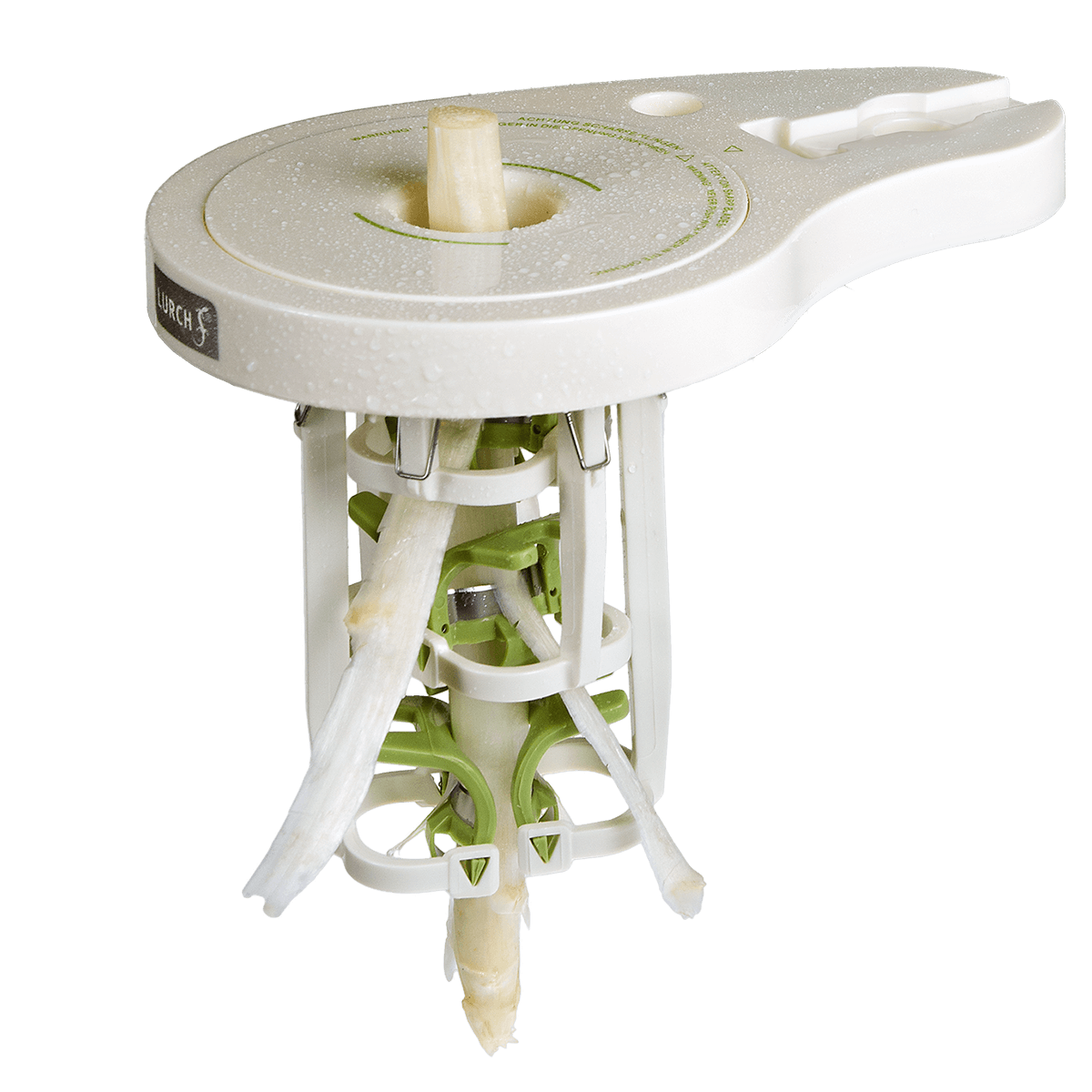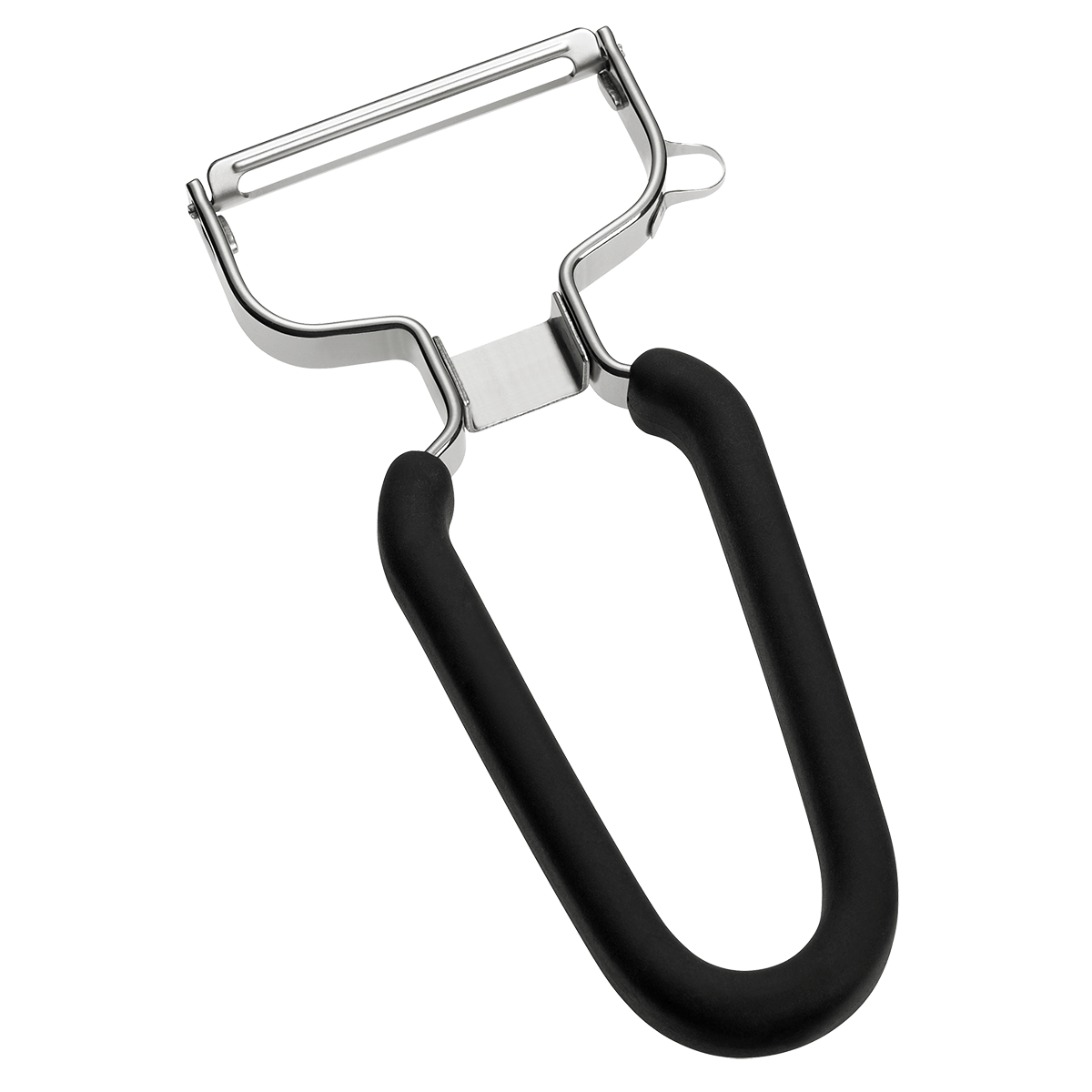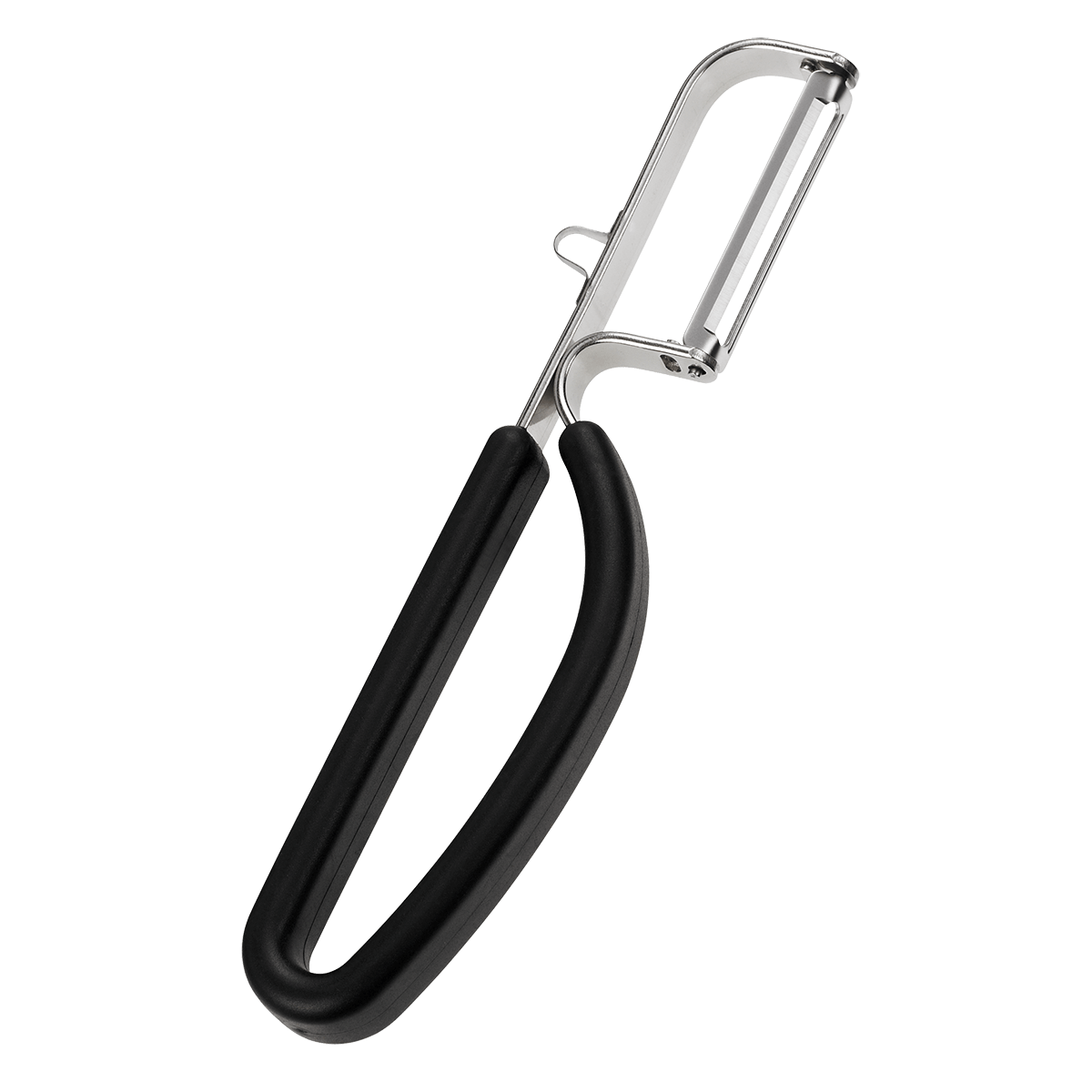Differences between white and green asparagus
Before we get to the actual peeling of the asparagus, we would like to give you an overview of the different types of asparagus.
A basic distinction is made between white and green asparagus. While white asparagus has a firm and fibrous skin and must be peeled before eating, green asparagus is more tender and has a thinner skin. Here it is enough to simply remove the woody part at the bottom with a knife. Green asparagus can even be eaten with the peel on.

Peeling white asparagus: tips for careful preparation
Thorough washing and peeling
An important step in preparing white asparagus is washing and peeling it thoroughly. You should be particularly careful and generously remove all woody areas. If you don't remove them sufficiently, they will remain hard and fibrous even after cooking, which can affect the enjoyment of the asparagus. It is therefore advisable to work particularly precisely here to ensure an optimal taste experience.
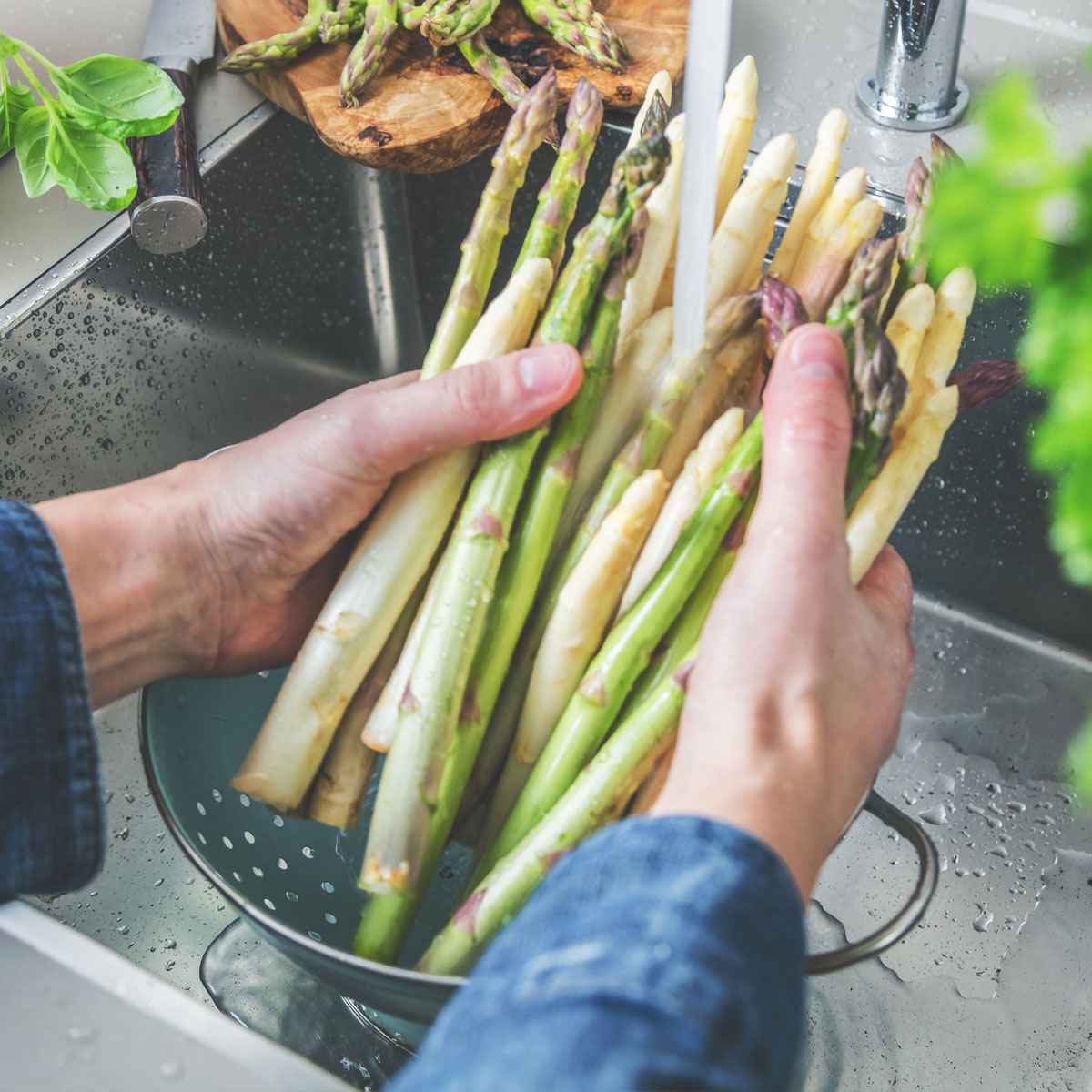
The importance of the peeling direction of asparagus
When peeling white asparagus, not only the hand position but also the direction of peeling is crucial. In order not to damage the delicate asparagus spears, you should always peel from top (head) to bottom (cutting edge) and hold the asparagus by the head for support. Meanwhile, place the stable part of the asparagus on the heel of your hand. The peel can be easily removed with a sharp peeler and little pressure. After each course you can turn the asparagus stalk a little further.
After peeling, you should cut off the woody cut edge at the bottom, about two centimeters is enough. With a little practice and patience, the peeling process can be mastered quickly and you can begin to enjoy the tender asparagus.
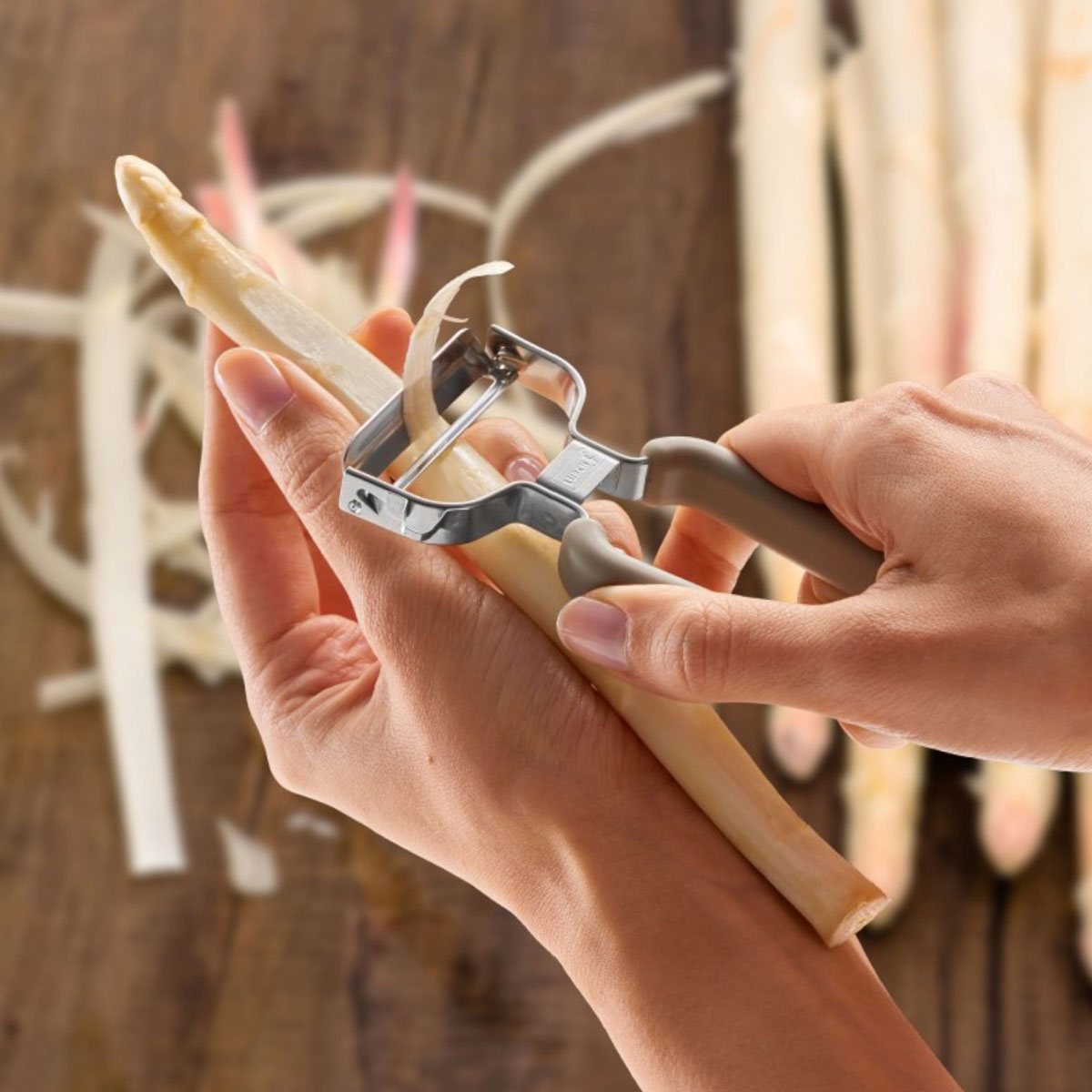
Product tip: Table-top asparagus peeler without electricity
If you want to buy a large amount of asparagus, we recommend our table asparagus peeler. With the included screw clamp you can easily attach it to the edge of the table and peel the asparagus like on an assembly line. The sensitive head is protected and you don't need any electricity.
The best LURCH asparagus peelers
Peel green asparagus - this is the right way!
Here you can find out everything you need to get the most out of green asparagus!
Do you have to peel it or not? In contrast to white asparagus, green asparagus usually does not need to be peeled because its soft shell is easy to eat.
However, you should cut off the woody cut edge (bottom) by about two centimeters before further processing. However, it can happen that some sticks are more than just two centimeters woody. In this case, you can carefully peel the affected area with the asparagus peeler.
Tip: You should not throw away the peel of both types of asparagus. This is ideal as a stock for asparagus soup or broth.
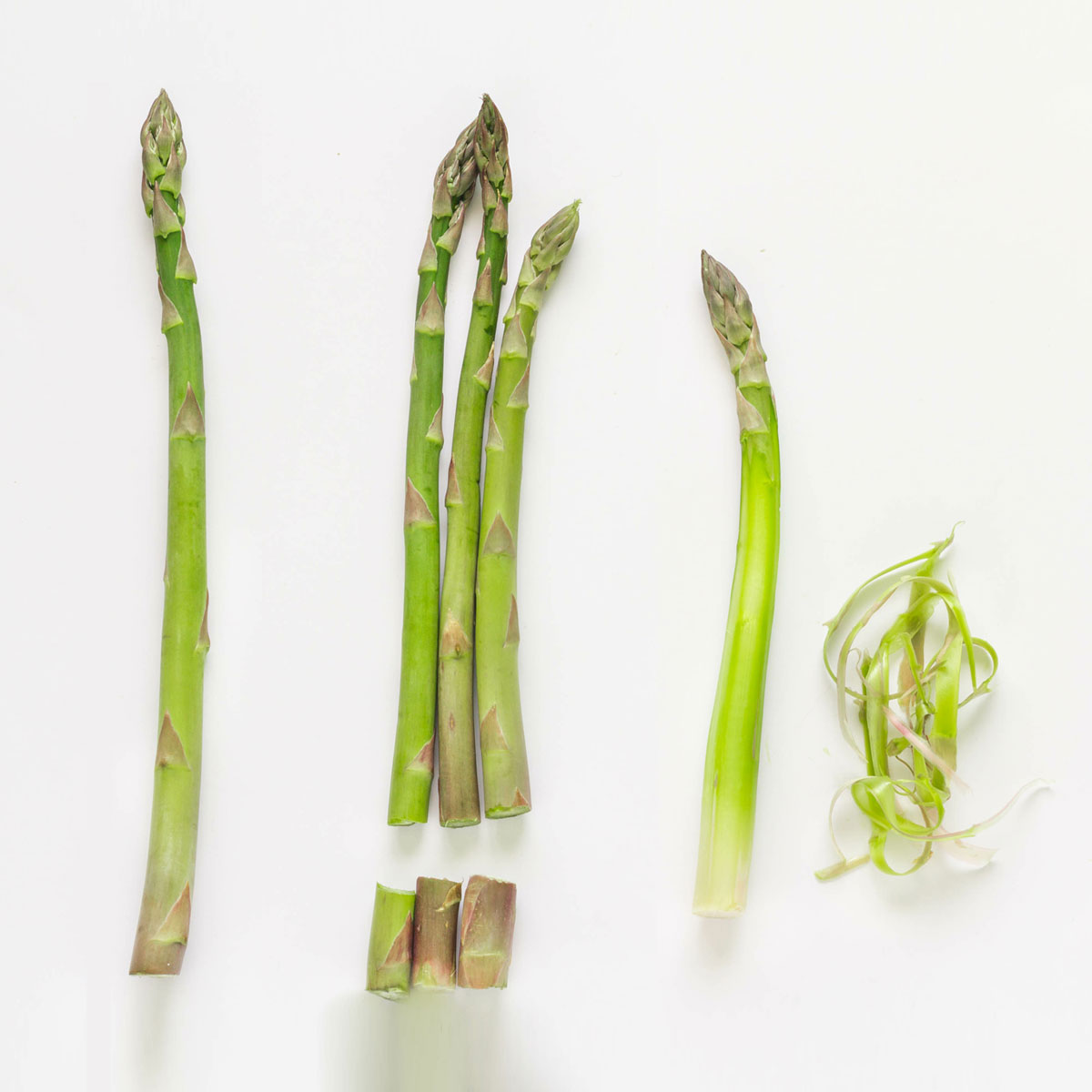
Storing and preserving asparagus correctly - tips and tricks
To keep your asparagus fresh for as long as possible, you should wrap it unpeeled in a damp kitchen towel and store it in the refrigerator at 6°C. However, you should prepare and enjoy the asparagus no later than the fourth day, as it loses its aroma over time, even if stored correctly.
If you want to store asparagus that has already been peeled, we recommend a moist wrapping made of cloth or foil. However, you should eat peeled asparagus as soon as possible as it is harder to keep fresh.
Good to know: Unlike potatoes, asparagus can be easily frozen. Clean and peel your asparagus spears before storing them in a box in the freezer for up to six months. To cook, simply put the frozen asparagus in a pot of boiling water. Voila!
Important! Always freeze the asparagus washed and peeled!



